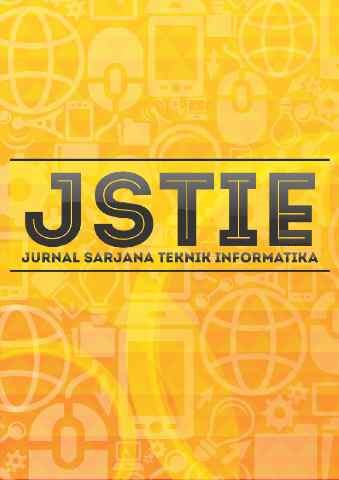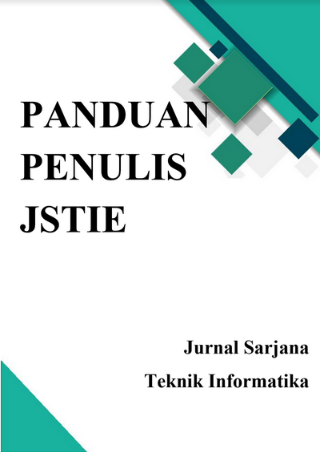Sistem Pengambilan Keputusan Penentuan Pemasok Obat Pada Apotek Al Fayadh Farma Yogyakarta dengan Metode Topsis
DOI:
https://doi.org/10.12928/jstie.v8i3.17702Keywords:
Apotek, TOPSIS, PBF(pedagang besar farmasi), Sistem Pengambilan KeputusanAbstract
Apotek merupakan tempat yang dapat digunakan untuk menyalurkan dan memberikan informasi obat yang lengkap kepada masyarakat. Kendala dapat terjadi dalam penyediaan obat di apotek, seperti dalam memilih pemasok obat yang mampu memberikan pelayanan terbaik bagi apotek dari segi harga maupun jasa. Sehingga kinerja dari apotek dalam pemesanan obat ke pemasok obat masih belum efisien. Oleh karena itu, sangat diperlukan sistem pengambilan keputusan penentuan pemasok obat di apotek Al Fayadh Farma Yogyakarta dengan metode TOPSIS agar kinerja apotek lebih efisisen. Sistem pengambilan keputusan penentuan pemasok obat ini memerlukan 20 data pemasok dan 100 data obat yang didapatkan pada saat wawancara yang akan dimasukan ke dalam perhitungan metode TOPSIS dengan kriteria nilai harga pemasok, nilai stok barang, nilai layanan pengiriman, dan nilai sistem pembayaran sesuai proses bisnis yang telat dibuat. Sistem dirancang sesuai dengan permintaan dari apotek dan terakhir pengujian sistem tersebut diuji berdasarkan tampilan dan hasil akhir oleh pemilik apotek. Hasil dari penelitian yang dilakukan adalah sistem pengambilan keputusan dengan metode TOPSIS dapat merekomendasikan pemasok obat dengan ketentuan kriteria yang diinginkan dengan meranking atau merekomendasikan 5 pemasok obat teratas sesuai dengan kriteria masing masing dari pemasok obat tersebut. Dengan pengujian akurasi didapatkan sebesar 80%.References
F. SMK, “Pengertian Apotek,†2011. [Online]. Available: http://farmasismk.blogspot.com/2011/11/pengertian-apotek.html.
R. Jannah, D. Kurniadi, and M. Qomaruddin, “Penerapan Metode Technique For Order Preference By Similarity to Ideal Solution ( Topsis ) untuk Menentukan Prioritas Dokter Gigi Muda Bagi Pasien Pada Rumah Sakit Islam Gigi dan Mulut Sultan Agung,†J. Elektro dan Inform. Unissula, vol. 3, no. 1, 2018.
T. Turban, Efraim;Aronson, Lav E.;Peng Liang, “Decision Support Systems and Intelligent Systems,†in Decision Support Systems and Intelligent Systems, 7 JILID 1., ANDI, 2019.
T. Pratama, “METODE SISTEM PENDUKUNG KEPUTUSAN,†12 JUNI, 2014. [Online]. Available: http://teguhpratam4.blogspot.com/.
M. Muhlis, Diktat Kuliah Farmasetika. Yogyakarta: FARUAD, 2015.
M. Rendra, H. Roisdiansyah, A. W. Widodo, and N. Hidayat, “Sistem Pendukung Keputusan Untuk Pemilihan Penanaman Varietas Unggul Padi Menggunakan Metode AHP dan TOPSIS,†vol. 1, no. 10, pp. 1058–1065, 2017.
A. Mubarok, H. D. Suherman, Y. Ramdhani, and S. Topiq, “Sistem Pendukung Keputusan Kelayakan Pemberian Kredit Dengan Metode TOPSIS,†vol. 6, no. 1, pp. 37–46, 2019.
Sugiyono, Metode Penelitian Kuantitatif, Kualitatif dan R&D. Bandung: Alfabeta, 2013.
A. Bangor, T. Staff, P. Kortum, J. Miller, and T. Staff, “Determining What Individual SUS Scores Mean : Adding an Adjective Rating Scale,†vol. 4, no. 3, pp. 114–123, 2009.
Downloads
Published
Issue
Section
License
License and Copyright Agreement
In submitting the manuscript to the journal, the authors certify that:
- They are authorized by their co-authors to enter into these arrangements.
- The work described has not been formally published before, except in the form of an abstract or as part of a published lecture, review, thesis, or overlay journal. Please also carefully read Journal Posting Your Article Policy.
- The work is not under consideration for publication elsewhere.
- The work has been approved by all the author(s) and by the responsible authorities – tacitly or explicitly – of the institutes where the work has been carried out.
- They secure the right to reproduce any material that has already been published or copyrighted elsewhere.
- They agree to the following license and copyright agreement.
Copyright
Authors who publish with Jurnal Sarjana Teknik Informatika agree to the following terms:
- Authors retain copyright and grant the journal right of first publication with the work simultaneously licensed under a Creative Commons Attribution License (CC BY-SA 4.0) that allows others to share the work with an acknowledgement of the work's authorship and initial publication in this journal.
- Authors are able to enter into separate, additional contractual arrangements for the non-exclusive distribution of the journal's published version of the work (e.g., post it to an institutional repository or publish it in a book), with an acknowledgement of its initial publication in this journal.
- Authors are permitted and encouraged to post their work online (e.g., in institutional repositories or on their website) prior to and during the submission process, as it can lead to productive exchanges, as well as earlier and greater citation of published work.








